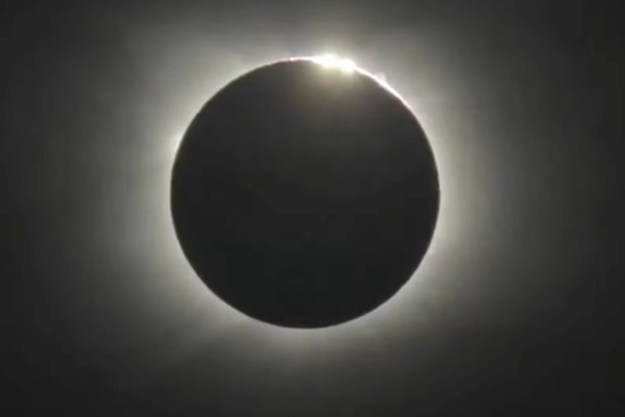If there’s one drink you just can’t enjoy out of a vacuum-sealed sippy pouch with a straw, it’s whisky. Let’s face it — nothing strips the intrigue and finesse out of a venerable liquor like plastic and tubing, which is how astronauts today must consume most of their beverages.
But here to restore some dignity to this most dignified drink is Scottish distillery Ballantine’s, which has finally resolved astronauts’ pressing need for a zero gravity glass, allowing the denizens of the International Space Station to have a righteous night cap sans straw.
“When they go on a bit of an adventure, [whisky is] the thing people want to take with them.”
Clearly a forward-thinking company, Ballantine’s is anticipating the need for such a glass as the space tourism industry takes off over the next few decades. And given that the habits of the rich and famous, who will make up the first wave of space tourists, often include fine wines and liquors out of finer crystal and stemware, Ballantine’s is borrowing against future capital and meeting the demand they are sure will soon come.
Speaking with the New York Times, Peter Moore, the brand director for Ballantine’s, noted, “When they go on a bit of an adventure, [whisky is] the thing people want to take with them. This is about getting ourselves ready.”
And boy, are they ever ready. The glass is a piece of art in and of itself. A rose-gold-plated stainless steel convex base forms the foundation of the revolutionary vessel, with the surface tension maintained by its spiral design ensuring that the whisky will actually stay put and not float off in an amorphous blob. Beyond that, there’s a helix winding its way up the glass that contains a small channel, which uses capillary action to coax the whisky to yet another gold component — a mouthpiece — where the drinker takes a sip.

James Parr, who developed the glass for Ballantine’s, told GizMag, “We are using inertia and the notion that the whisky will stay at rest while the bottle and the glass is moved around the resting liquid. Motion one pulls the whisky into the base of the glass, then motion two is to roll the whisky in your hand and let the heat transfer through the metal base into the liquid itself. Step three involves then moving the glass down prior to moving your nose into the space where the vapors are resting. The final motion is to move the glass upwards to capture the liquid in the base plate and let it enter your mouth.”
Who knew drinking could be so complicated?
Ultimately, Parr noted, the goal was to recreate the experience of drinking whisky here on Earth, only in a zero gravity situation as one would have in space. Even the whisky itself had to be rethought a bit to ensure an analogous scenario.
“In space, you do not experience the sense of smell and taste with the same intensity as you do on Earth,” explained Sandy Hyslop, Ballantine’s Master Blender. “This meant I had to make the Ballantine’s Space Whisky more heightened in flavor and robust whilst maintaining the Ballantine’s signature style. Astronauts miss the taste of home so crafting a fruitier, stronger, more floral blend is a way they can keep the taste of home with them.”
While it may be a while yet before this whisky and whisky glass are put into action, it’s good to know that we’re well prepared for our space travels. After all, what better way to enjoy the view from way up there than with a good glass of whisky?
Editors' Recommendations
- Relativity Space launches first 3D-printed rocket, but it didn’t end well
- Wild new 3D printer makes parts by sending titanium particles supersonic


